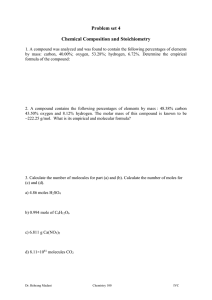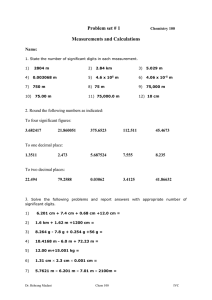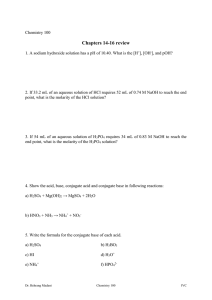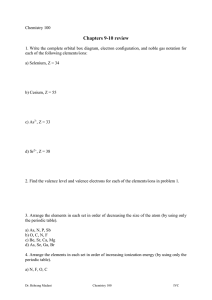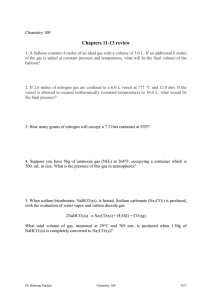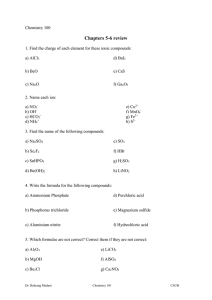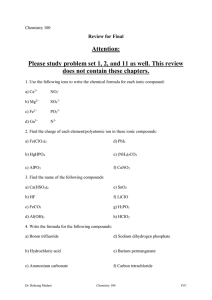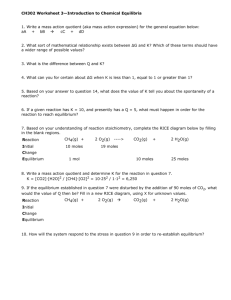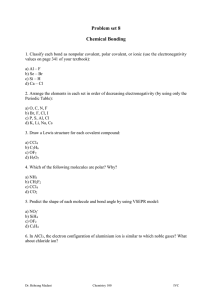Problem set 12 Equilibrium & Redox Reactions
advertisement
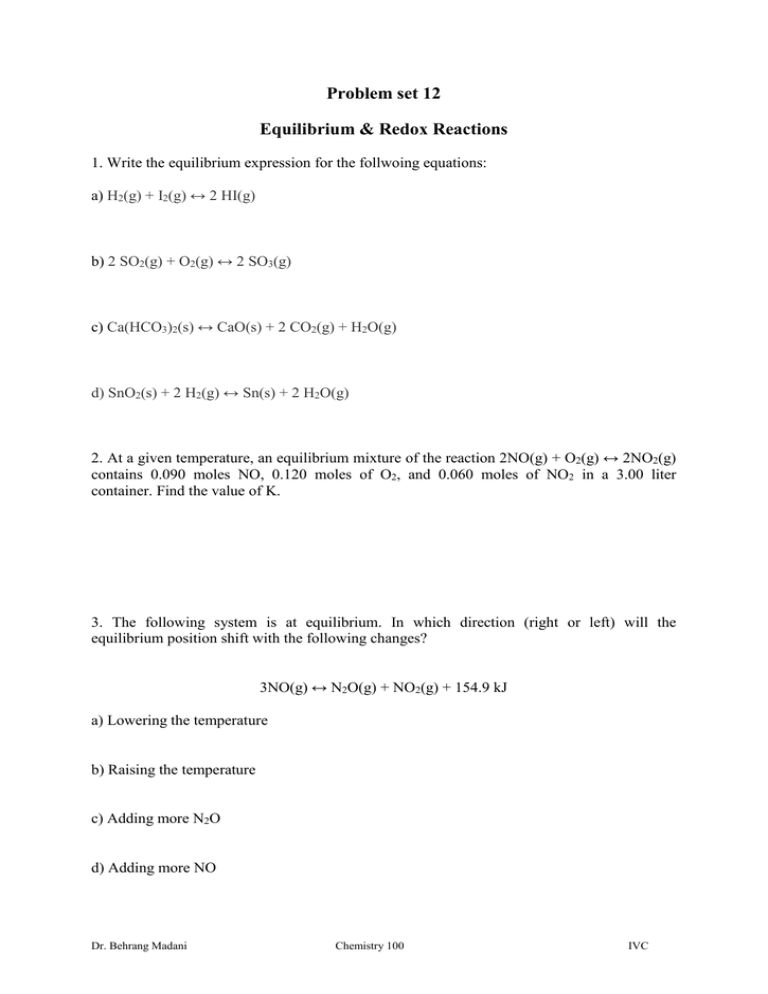
Problem set 12 Equilibrium & Redox Reactions 1. Write the equilibrium expression for the follwoing equations: a) H2(g) + I2(g) ↔ 2 HI(g) b) 2 SO2(g) + O2(g) ↔ 2 SO3(g) c) Ca(HCO3)2(s) ↔ CaO(s) + 2 CO2(g) + H2O(g) d) SnO2(s) + 2 H2(g) ↔ Sn(s) + 2 H2O(g) 2. At a given temperature, an equilibrium mixture of the reaction 2NO(g) + O2(g) ↔ 2NO2(g) contains 0.090 moles NO, 0.120 moles of O2, and 0.060 moles of NO2 in a 3.00 liter container. Find the value of K. 3. The following system is at equilibrium. In which direction (right or left) will the equilibrium position shift with the following changes? 3NO(g) ↔ N2O(g) + NO2(g) + 154.9 kJ a) Lowering the temperature b) Raising the temperature c) Adding more N2O d) Adding more NO Dr. Behrang Madani Chemistry 100 IVC e) Removing some N2O f) Adding a catalyst g) Inreasing the volume 4. 27. The Ksp value for solid Mn(OH)2 is 2×10-13 at 25°C. Calculate the solubility of Mn(OH)2 in water at 25°C. 5. Find the oxidation state (oxidation number) for each element in the following molecules/ions. a) N in NH4MnO4? b) Mn in NH4MnO4? c) C in C2H4O2? d) Xe in XeO42-? e) S in H2S f) Fe in FeCl5 6. Given the unbalanced equation below: Cr2O3(s) + Al(s) → Cr(s) + Al2O3(s) Dr. Behrang Madani Chemistry 100 IVC a. identify the oxidation state of each element b. identify the oxidizing agent c. identify the reducing agent 6. Given the unbalanced equation below: NaOH + Cl2 → NaCl + NaClO + H2O a. identify the oxidation state of each element b. identify the oxidizing agent c. identify the reducing agent 7. Blance each chemical equation using half-reactions method. a) Cu(s) + HNO3(aq) → Cu(NO3)2(aq) + NO2(g) b) Cr3+(aq) + Cl1-(aq) → Cr(s) + Cl2(g) Dr. Behrang Madani Chemistry 100 IVC
